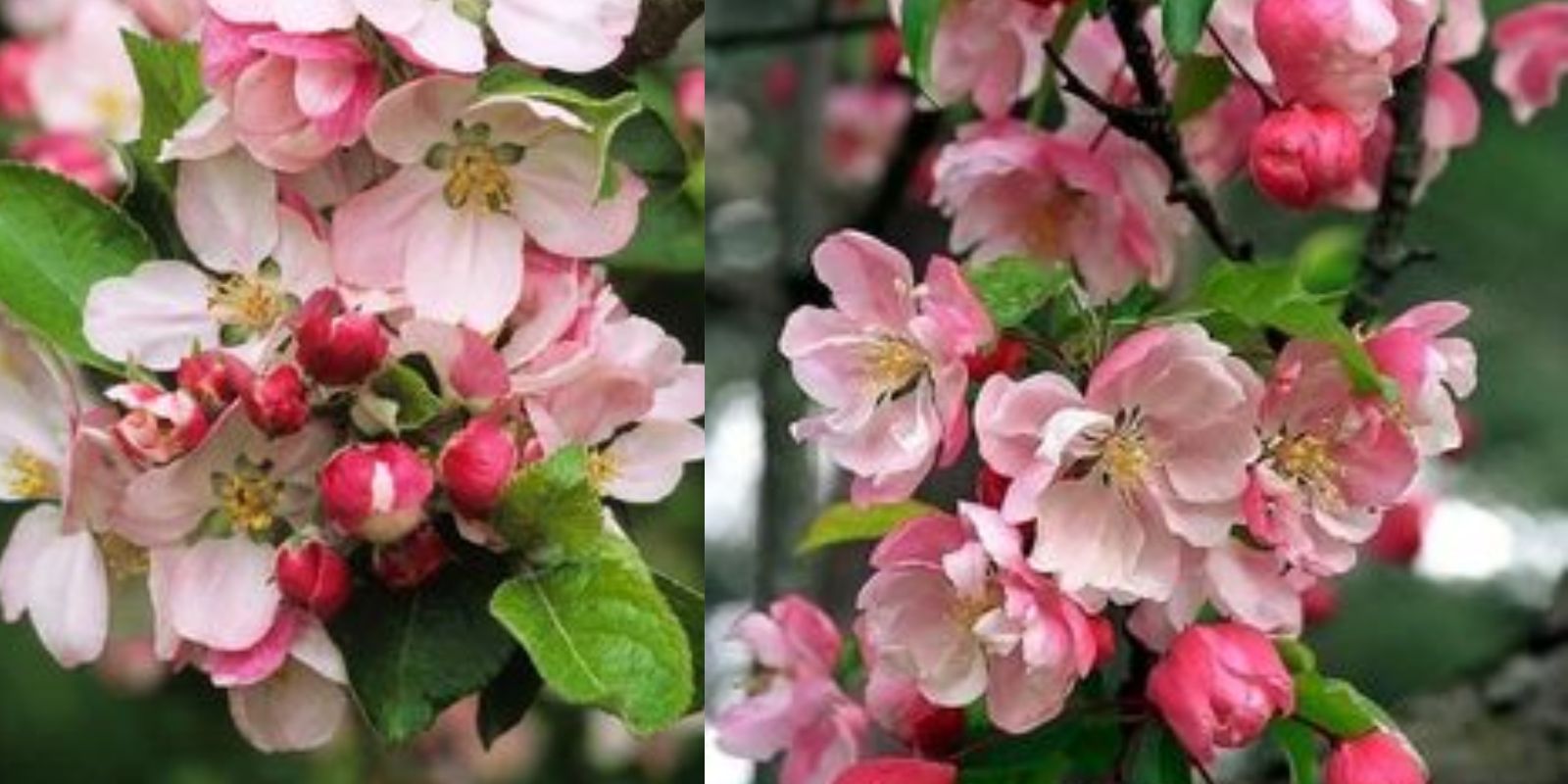Apple Blossom (Malus domestica) stands as a symbol of renewal and abundance, gracing orchards and gardens with its ethereal blooms. As a member of the Rosaceae family, this fruit-bearing tree not only captivates with its delicate flowers but also promises a bounty of crisp, flavorful apples later in the season. Growing and nurturing Apple Blossom requires understanding its unique needs, from planting to pruning and beyond. This comprehensive guide will equip you with the knowledge to cultivate and care for Apple Blossom, ensuring your garden or orchard is adorned with the splendor of spring each year.
Introduction
Apple Blossom, celebrated for its romantic allure and aromatic presence, emerges as a harbinger of spring, transforming landscapes into a canvas of delicate pink and white blossoms. Beyond its visual charm, these blossoms play a crucial role in pollination, setting the stage for the development of apples that are enjoyed fresh, baked, or pressed into cider. Whether you’re an orchardist, a home gardener, or simply an admirer of natural beauty, learning to care for Apple Blossom ensures not only aesthetic gratification but also the promise of a fruitful harvest.
Steps to Growing and Caring for Apple Blossom
1. Planting
Choosing the Right Location: Select a site that receives full sun for at least six hours a day. Apple trees thrive in well-drained, loamy soil with a pH between 6.0 and 7.0. Avoid low-lying areas prone to frost pockets or poor drainage, as these conditions can compromise tree health and flower production.
Timing: Plant Apple Blossom in early spring or late fall when the tree is dormant. This allows the roots to establish before the onset of active growth.
Planting Process: Dig a hole twice the diameter of the root ball and deep enough to accommodate the roots without bending or crowding. Gently loosen the roots and position the tree so the graft union (where the scion and rootstock meet) sits just above the soil line. Backfill with soil, tamp down gently, and water thoroughly to settle the soil around the roots.
2. Watering
Establishment Phase: Provide consistent moisture during the first year after planting to support root development. Water deeply once a week, ensuring the soil remains evenly moist but not waterlogged.
During Flowering and Fruit Development: Maintain regular watering to support healthy blossom and fruit formation. Lack of water during these critical stages can lead to poor fruit set and smaller apples.
Mulching: Apply a layer of organic mulch, such as wood chips or compost, around the base of the tree to retain soil moisture and suppress weed growth. Mulching also helps regulate soil temperature and protects roots during extreme weather conditions.
3. Pruning
Purpose of Pruning: Pruning Apple Blossom promotes tree health, encourages vigorous growth, and enhances flower and fruit production. Perform pruning tasks during the dormant season, typically in late winter or early spring before new growth begins.
Pruning Techniques:
- Remove Dead, Diseased, or Damaged Wood: Start by removing any dead, diseased, or damaged branches using sharp, clean pruning shears. Cut back to healthy tissue, making smooth cuts just above a bud or lateral branch.
- Thin Out Crowded Branches: Improve air circulation and light penetration within the canopy by selectively removing overcrowded or crossing branches.
- Shape the Tree: Encourage an open, balanced structure by pruning to outward-facing buds. This allows sunlight to reach all parts of the tree, promoting uniform growth and fruit ripening.
4. Pollination
Understanding Pollination: Most apple varieties are not self-pollinating and require cross-pollination with a compatible apple variety to produce fruit. Bees and other pollinators play a vital role in transferring pollen between flowers, facilitating fertilization and fruit set.
Choosing Compatible Varieties: Plant at least two different apple varieties with overlapping bloom times to ensure successful cross-pollination. Consult local nurseries or extension services for recommendations based on your region and climate.
5. Pest and Disease Management
Common Pests: Apple trees are susceptible to pests such as apple maggots, aphids, and codling moths, which can damage fruit and foliage if left unchecked. Monitor trees regularly for signs of pest infestation and treat promptly with organic or chemical insecticides as needed.
Disease Prevention: Fungal diseases like apple scab, powdery mildew, and cedar apple rust can affect Apple Blossom and fruit quality. Choose disease-resistant apple varieties when possible and practice good sanitation by removing fallen leaves and fruit from the ground.
Conclusion
Apple Blossom represents more than just a fleeting spectacle of spring; it symbolizes the promise of a fruitful harvest and the cycle of renewal in nature. By following these steps and embracing best practices for growing and caring for Apple Blossom, you can cultivate healthy, resilient trees that reward you with abundant blooms and delicious apples season after season. Whether you’re tending to a backyard orchard or a community garden, the beauty and bounty of Apple Blossom are sure to enrich your outdoor space and evoke a sense of wonder and appreciation for the natural world.
Celebrate the arrival of spring with Apple Blossom, and nurture these iconic trees to create a thriving orchard or garden landscape. From planting and watering to pruning, pollination, and pest management, each step in caring for Apple Blossom contributes to the health and vitality of your trees. Embrace the joy of growing your own apples and savor the beauty of Apple Blossom as it transforms your surroundings into a sanctuary of natural beauty and abundance.

